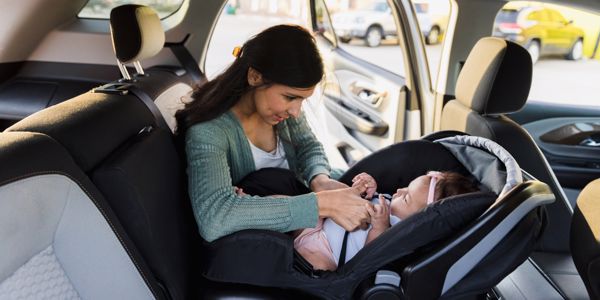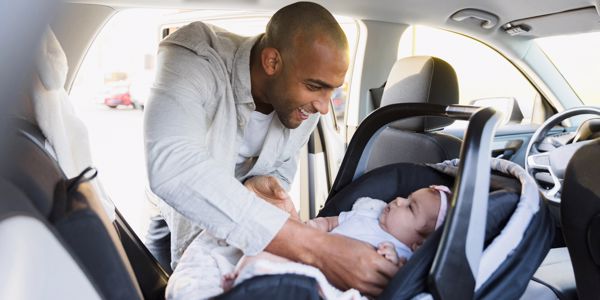This is a question that many parents ask. While the law states one thing, This question is far from straightforward - making it a long-standing topic that is up for debate across all platforms.
This post will cover U.K. car seat laws and share some helpful information about car seat safety.
UK Car Seat Law
U.K. laws state that you must use an appropriate child car seat when travelling with children up to 135cm/4ft 5 inches or 12 years of age - whichever of the three comes first. Thereafter, they are able to travel with a normal seat belt.
Legally, your child must travel in a rear-facing car set until they are 15 months old. However, Extended rear-facing seats are becoming more and more common.
A child’s car seat can be picked according to your child’s height or weight. Experts in the field recommend that a car seat should be used for all children under 150cm or those weighing less than 36kg (5st 10lbs).
[Read More: Car Seat Law Changes in 2023]
Legal Requirements for Rear-Facing Car Seats
As stated above, any children under 15 months of age must travel in a rear-facing car seat.
It is important to know that you should never fit a rear-facing child’s seat in the front of a car where there is an active airbag. It is vital for airbags to be disabled.
Legal Requirements for Forward-Facing Car Seats
From the age of 15 months onwards, it is thought that your child’s neck will be strong enough to better handle the impact of a car accident - therefore, forward-facing car seats can be used. However, as mentioned above, many experts recommend that your baby be rear-facing for as long as possible.
UK Approved Car Seats
Height Based Seats
“iSize” seats (car seats that meet the highest level of safety standards) are height-based seats. In the U.K., these seats must be EU-approved. These seats will have a capital “E” in a circle with “R129” on their label.
These seats need to be rear-facing until your child is over 15 months old.
Weight Based Seats
In the U.K., weight-based seats must be EU-approved. These seats will have a capital “E” in a circle and “ECE R44” on their label. You choose the appropriate seat for your child based on their weight and weight ranges will overlap.
Weight-based seats also need to be rear-facing until your child is over 15 months old.
So, How Long Should My Child Be Rear-Facing?
All U.K. approved car seats must be rear-facing until they are at least 15 months old, by law. However, many experts in the field advise that they should travel in rear-facing car seats for even longer - it is possible to do this up to the weight of 25kg, around four years old, when their muscles and bones have properly developed (or 105 cm tall)
Your baby’s development will grow and change dramatically each month as they grow bigger and stronger. The longer you can keep your baby rear-facing, the better and safer they will be.
Why Is It Safer To Be Rear-Facing for as Long as Possible?
In the event of a head-on collision, children who are travelling in a forward-facing car seat can be thrown forwards during impact, putting stress on their head and neck - both of which are extremely fragile, thus leading to serious injury.
If your child is rear-facing, in the event of a collision, the car seat spreads the forces from the impact across the whole car seat - protecting the head and neck.
It is estimated that 70% of collisions are head-on (or frontal), so it is safest for your child to be rear-facing.
What Makes an Appropriate Child Car Seat?
Uk law states that an appropriate child car seat is one that:
- Conforms to EU-approved standards for height or weight.
- Is suitable for the child’s weight and height and is fitted correctly and according to the manufacturer’s instructions
- Is compatible with the vehicle it will be used in (it’s designed to work with a diagonal seat belt strap unless it is to be used with ISOFIX anchor points or lap seat belt)
- Is not used in side facing seats
- If fitted in the front seat of the car, the airbags must be disabled/deactivated






